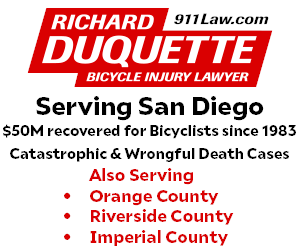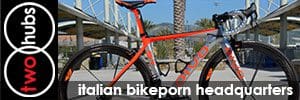Creating Scofflaw Cyclists, then Killing Them
By Seth Davidson
Every Sunday the Kettle Ride leaves Manhattan Beach at 7:00 a.m. and makes its way to Santa Monica, and then on to Cross Creek via PCH. Every Sunday at the intersection of Via Marina and Washington, the 60+ pack of cyclists waits at the intersection until one of two things happens: A rider crosses the street and pushes the pedestrian crosswalk button, or a car trips the underground signal to change the light from red to green.
The first option puts the button-pusher in the crosshairs of any oncoming traffic. The second option, early in the morning in Venice, can take a very long while.
Maddeningly, if you patiently wait for the light to change on its own, it never will. That’s because the signal actuator system embedded in the asphalt at that intersection can’t recognize bicycles. This problem is replicated thousands of times throughout Southern California, and many cyclists will inevitably give up on the light and run it.
Motorists see what appears to be scofflaw behavior and use it to justify their belligerence towards bikers. Riders who run the red light put themselves at even greater risk by venturing across intersections when oncoming or turn traffic still has a green light. When the cyclist gets hit, injured, or killed, he’s legally in the wrong and the motorist has a great defense to any negligence suit the cyclist might bring. The whole thing confirms the motoring public’s distorted perception that cyclists never stop at red lights.
The irony, if there’s any irony in riders getting egged into traffic and hit by cars, is that although cyclists are required by the California motor vehicle code to abide by traffic laws, the road engineers and street planners are not required to design traffic signals that recognize bicycles. Joseph Heller would love it.
In the case of the Kettle Ride, venturing over to push the pedestrian crosswalk puts you in the crosshairs of traffic and violates the law if you get hit, but it’s no anomaly. The Tuesday/Thursday Pier Ride has a similar non-changing light in Playa del Rey, and another in the left turn lane when the group turns onto Westchester Parkway. And even if the sensors were set up to detect the slim vertical profile of a steel bike, anyone—which is to say everyone—riding a carbon frame is SOL.
The problem with these actuators and the role they play in getting cyclists killed has been known by the Institute of Traffic Engineers since 1982. Alternate methods of aligning the actuator wires to increase their sensitivity to bikes, as well as street labeling to let cyclists know where the actuators are, are methods that have been around a long time. Road engineers and city planners for the most part have buried it at the bottom of the priority pile. Given the fact that almost 800 people die each year on bicycles, and that over 44,000 bicyclists are injured annually, this is hardly a minor issue.
If you’re involved in an accident or cited by the police for running a red light, and it was one of those lights that never seemed to change no matter how long you waited for it, make sure you return to the intersection and check with the city to find out what type of actuator system was in place. You may have a good defense against the citation as well as a strong argument in any litigation concerning who was really at fault for the accident.
*Seth is a cyclist and attorney in Los Angeles. Call or email him with questions, fsethd@gmail.com, 424-241-8118.






